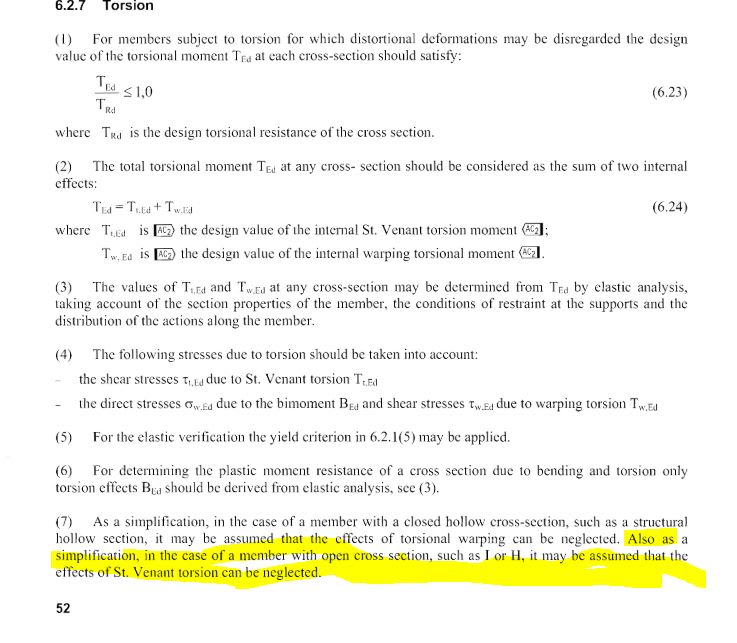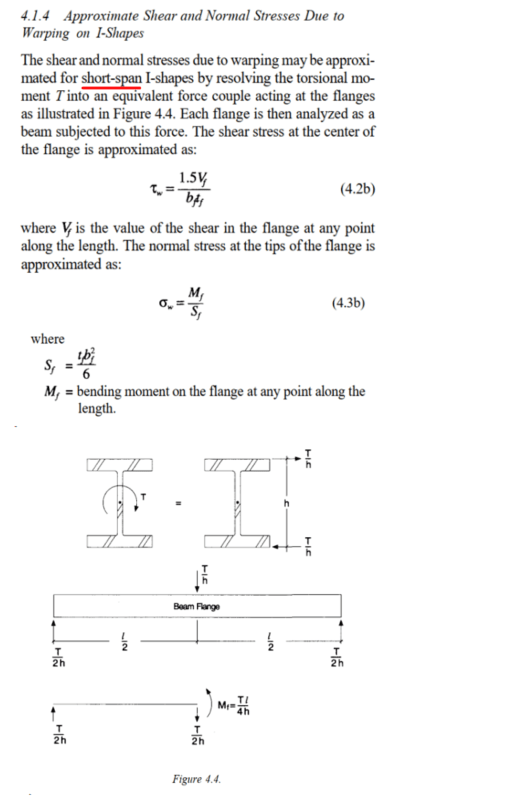icebloom
Structural
- Feb 15, 2024
- 58
From mechanics, torsion in I beams has 2 components, the warping component (force couple between flanges causing flanges to bend about their local major axes) and St Venant torsion. In the Eurocode for the design of torsion in an open section, it states that the St Venant component of the torsion can be neglected. Does anyone know why the Eurocode 3 ( allows you to neglect the St Venant torsion in design? My understanding from SCI P385 ( is that the relative proportions of warping torsion vs St Venant torsion depend upon the span of the beam, and for longer beams the St Venant torsion is the dominant mode. Is there some inherent conservativism in only considering warping torsion? Are there cases where this is not accurate?
Eurocode 3

SCI P385 (orange curve is long beam, red curve is short beam

Eurocode 3

SCI P385 (orange curve is long beam, red curve is short beam


